
Children with Sensory Processing Disorders (SPD) tend to have issues that influence school performance. The areas of difficulty shown in school tend to imitate the three major areas shown in the various types of Sensory Processing Disorders.
One major type of difficulty shown in school among children with SPD is that of difficulty managing their level of energy. This is commonly referred to as self-control or self-regulation. Deficits in self-regulation is one of the major subtypes of SPD. At times children who have these types of difficulties are hyperactive and over-aroused. Meanwhile, at other times, these children appear to be under-active with not enough energy for the task at hand. In both circumstances, deficits in attention are often noticed.
Another major problem that is often seen when children who have SPD involves coordination. Difficulties with coordination is a subtype of Sensory Processing Disorders that may be shown in a variety of ways. At times children with SPD have difficulty organizing control of their movement and posture. For example, they may have difficulty mounting schoolyard equipment, participating in active group games or show a number of slips and falls. At times the child with SPD tends to avoid sport activities, such as use of riding equipment due to an inability to coordinate movements of their arms and legs. At other times, the child with SPD may not be able to coordinate use of their eyes to guide movements of their bodies.

This young boy is showing the ability to coordinate alternating movements of his arms and legs. He is also using his eyes to guide him for this trick as he looks carefully at his body parts in their positions. He is holding both feet up off the ground while he pushes both arms down on the skateboard. In this way, he holds himself upright and steady as he sits on the skateboard while it rolls down the ramp.
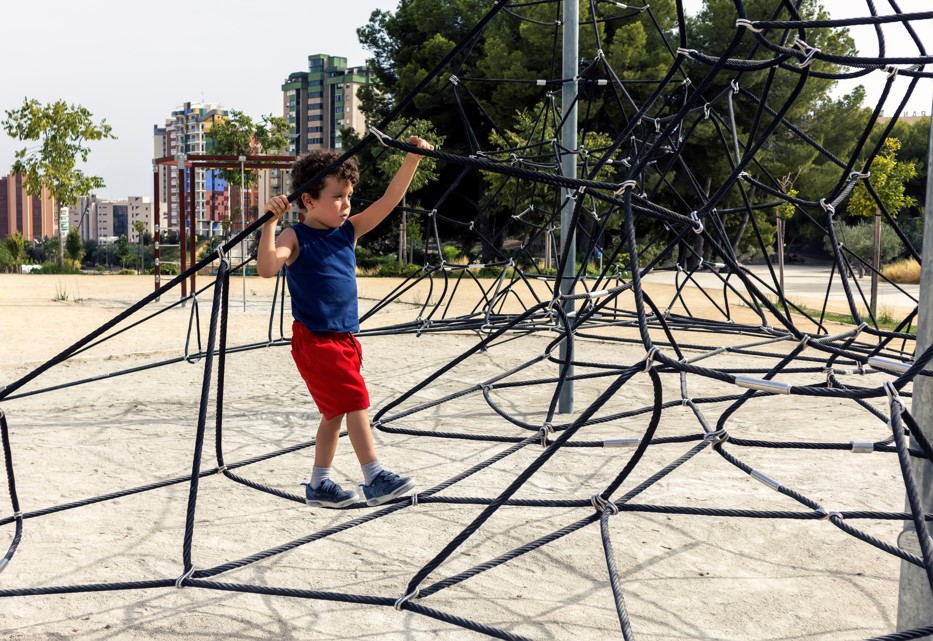
The youngster on the monkey bars is also showing the ability to coordinate alternating moves of both arms and legs. He is holding both arms up and apart in order to grab onto the bars. Meanwhile, he is keeping his legs close together and watching carefully as he walks in a straight line to keep his balance on the bottom rung of the monkey bars.
The need to coordinate eyes and hands together is seen during fine motor skills within the classroom as well…
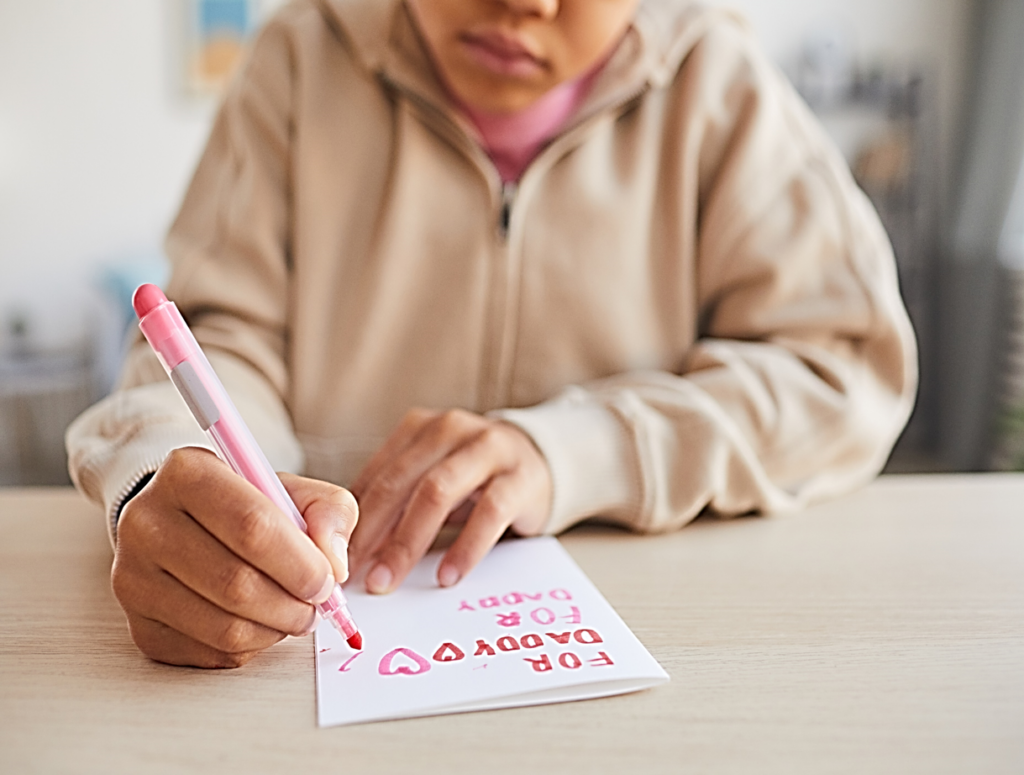
For example, the child seen in this photo is able to use both hands together as they perform alternating hand skills needed for handwriting. In this instance, one hand is being used to manipulate the writing tool. Meanwhile the other hand is being used to hold the paper still. Finally, it is the motor moves of the eyes that serve to govern coordination of moves required from both hands.
Another major issue for the child with SPD within a school environment is that of Sensory Sensitivities. Both hyper-sensitivities and under-sensitivities are frequently seen among children in school who have SPD.
Sensory sensitivities of concern often include difficulties adjusting to:
- visual information from: walls, hallways, whiteboards, classrooms, books, etc.
- auditory information from sounds of groups of children talking, playing, participating in playground activities, etc.
- tactile information from objects of different textures, shapes, and weights, etc.
These types of sensory input typically arise from physical and social environments over which the child has no control. Therefore, a degree of anxiety is also commonly linked in when sensory sensitivities are involved. Furthermore, avoidance tends to result in failure to adapt or adjust which tends to lead to further deficits in learning within a typical school environment.
Sensory sensitivities tend to be shown through hyper-sensitivities (an over sensitive response to the sensory input) as well as hypo-sensitivities (an under sensitive response to the sensory input). Both types of responses can be seen in the same child, and both types of response impact learning in the classroom, in physical education, and on the playground.
For example, the child with SPD who is under-responsive to sensations from muscles and joints may use too little pressure on writing tools, which results in lightly drawn images and handwriting. On the other hand, a different child who is under-responsive to sensations from muscles and joints may use too much pressure on objects. This may be shown by frequent breaking of pencils, crayons and other manipulatives in school, along with accidental breaking of toys at home.
Another form of sensory sensitivities shown by the child who has SPD is termed “sensory seeking behavior”. This style of inner management to sensory sensitivity is noted by the child who consistently uses unnecessary sounds, touch, or wiggling moves in attempts to calm and to organize themselves. For example, some of these children will hum consistently. Meanwhile other children may prefer to use hand-held objects as fidgets (small objects that invite twiddling or other repetitive movements of the hands) that can fit into a pocket. At times children with SPD may prefer to sit on exercise balls or wedge cushions so that they may wiggle while they work at a desktop.

These small woven fidgets are triggered by simple push and pull moves of the hands 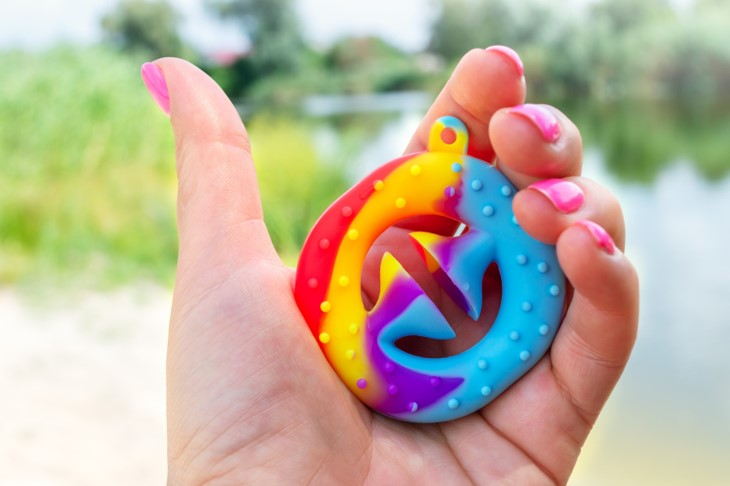
This click and snap fidget is triggered by squeezing the toy in either hand. 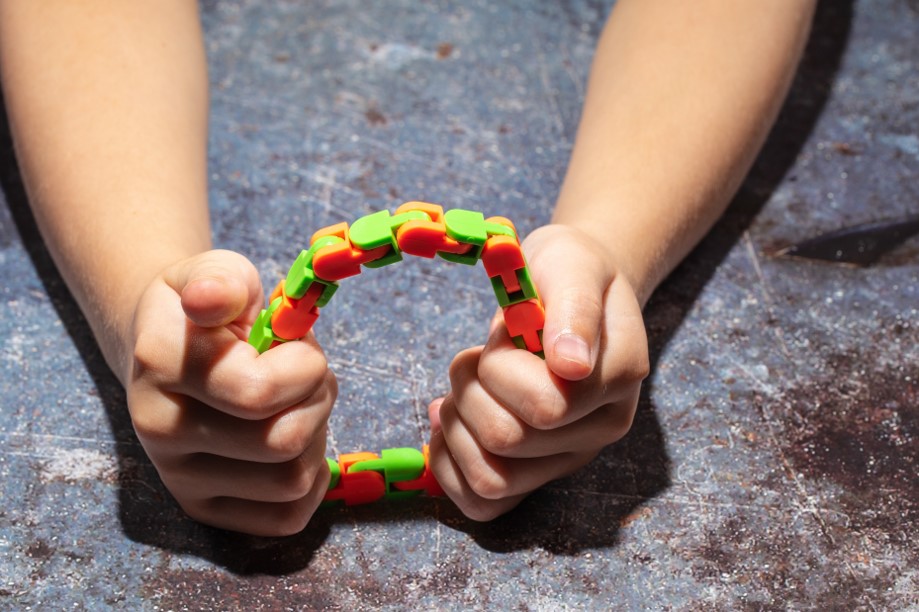
This snap fidget is triggered by squeezing the links into any direction.

Sensory seeking behaviors may occur in any environment as shown by this girl who is sitting on a beach with her body positioned in such a way as to capture sensory input from the sand and waves. She seems to be enjoying the touch and movement sensations of the shifting sand as it touches the skin of her legs. Her facial expression shows that she is also enjoying the irregular temperature and touch sensations arising from the small waves as they wash over arms and legs.
For more information about types of Sensory Processing Disorders and impact upon classroom performance, click on the links below:



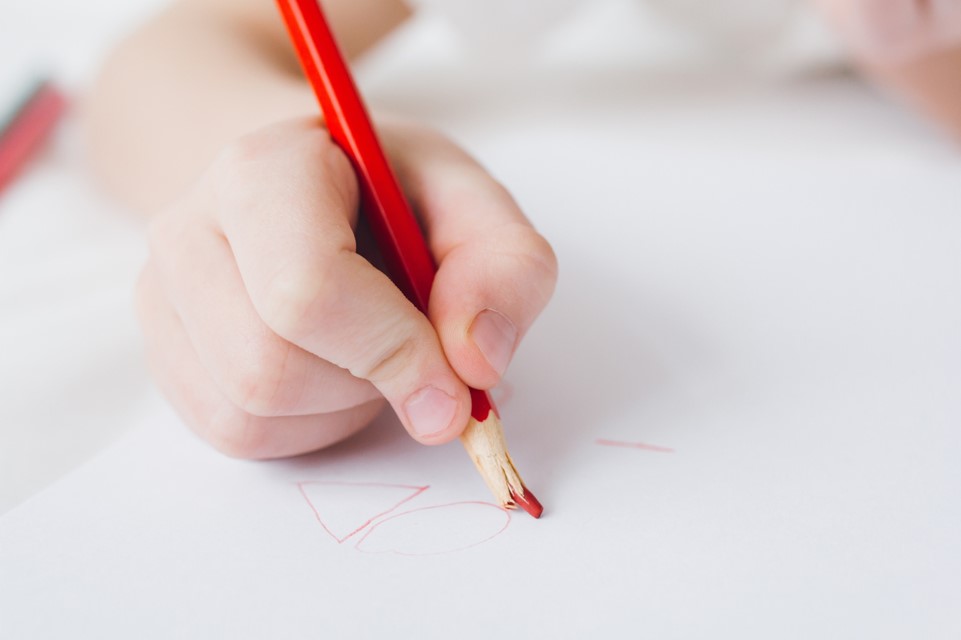

Comments are closed.